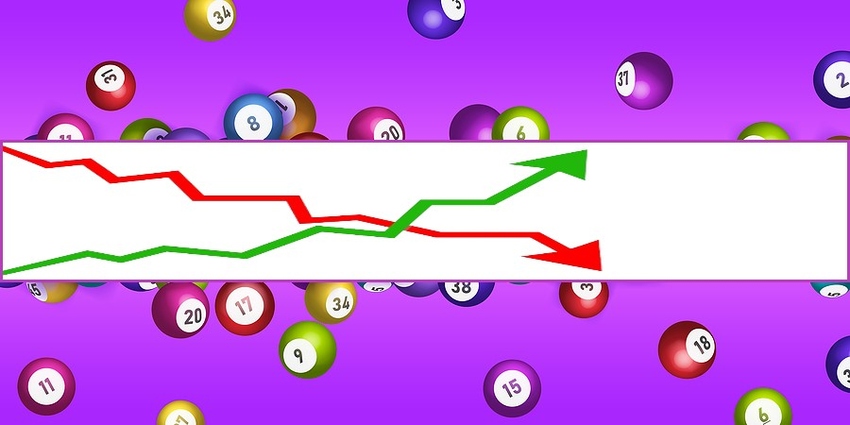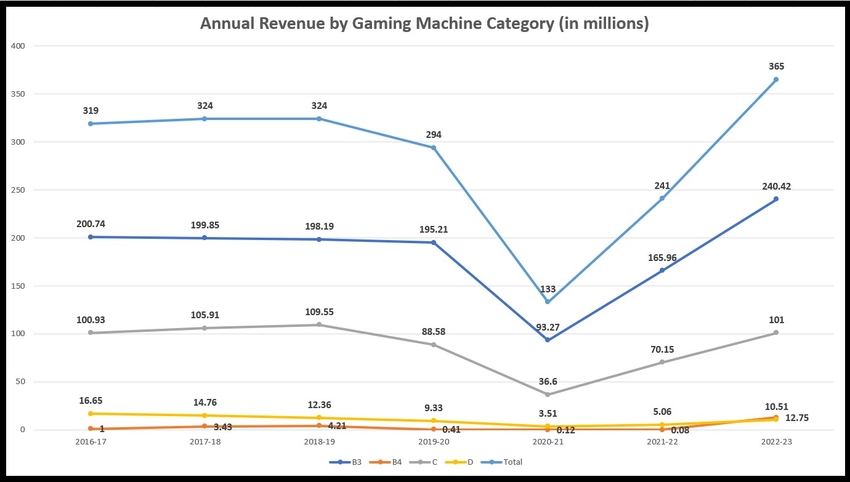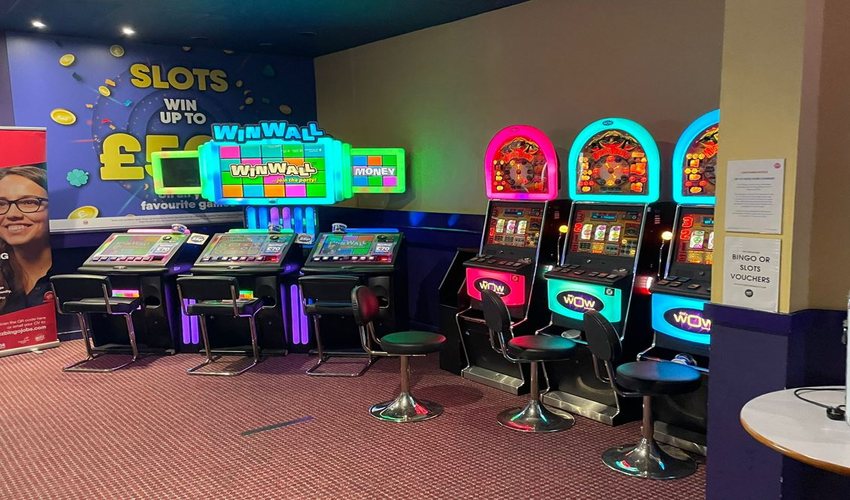 The bingo industry has had a rollercoaster ride of ups and downs since it first gained momentum back in the 40s and 50s, going from feast to famine before online bingo kicked off a bit of a resurgence.
The bingo industry has had a rollercoaster ride of ups and downs since it first gained momentum back in the 40s and 50s, going from feast to famine before online bingo kicked off a bit of a resurgence.
Online bingo has never really run into any difficulties with the annual revenues for the online sector increasing year on year, but bingo halls on the high street have had to adapt.
One of the ways they did this was to add other products like slots and gaming machines into their lobbies, eventually committing larger spaces to create a sort of mini slot casino that ran alongside the bingo room.
This is not all they did of course, but it is probably the most impactful change that bingo halls made.
How so?
Well, since 2019 we reached a point where bingo halls were actually making more from gaming machines than they were from bingo, meaning the venues’ primary purpose for existing is now their secondary source of income.
Over time then, what a bingo hall is has changed, and now more accurately reflects a real life version of an online bingo site, since bingo websites always offer scores of slot games and casual games alongside the bingo.
It also means that your average bingo player has different wants and needs than the average bingo player of 20 years ago.
All of this information comes from data released by the UK Gambling Commission.
Bingo Industry Revenue and Changes

The bingo industry in Britain was worth £766 million in 2023 – that’s the combined annual revenue of both online and brick and mortar businesses.
Yet bingo is bucking the trend of other major sectors in the gambling industry, because the majority of its’ gambling yield comes from high street venues rather than from online.
The gap between online and offline revenues was vast pre-covid, but even though lockdown caused huge damage to the non-remote sector that it hasn’t even nearly recovered from, it is still out-earning the online sector by a good 109% as of 2023.
Here is how the two sectors stack up next to each other in recent times with the percentage difference:
| Year | Online Bingo | Offline Bingo | % Difference |
|---|---|---|---|
| 2022-23 | 174 | 592 | 109.13% |
| 2021-22 | 184 | 389 | 71.55% |
| 2020-21 | 189 | 246 | 26.20% |
| 2019-20 | 177 | 576 | 105.97% |
| 2018-19 | 176 | 674 | 117.17% |
| 2017-18 | 164 | 680 | 122.27% |
| 2016-17 | 161 | 684 | 123.78% |
Note that the year they were only 26% apart was during Covid, when bingo halls had to close due to lockdowns, and even then, the online earnings didn’t outdo them.
The difference was reducing year on year though, and although part of that was because remote sales were increasing as non-remote sales were decreasing, the online revenues weren’t growing at nearly the same rate that the offline revenues were slowing down.
Plus, a lot of that money made in brick-and-mortar venues isn’t actually coming from bingo sales but from gaming machines as I will explore shortly – another trend which has been ongoing in recent years.
Going back to the combined annual revenue, that £766 figure is actually one of the lowest on record, caused mainly by the decline in high street revenues.
This tells me that fewer people are visiting bingo halls, and when they do, they spend less on bingo and more on slots etc. At the same time, although online bingo was growing in popularity, it wasn’t doing so at the sort of rate that anyone could get excited by and has even started to decline in recent years.
Since 2016, the biggest increase in online revenues from one year to the next has been 7.3%, and it actually dropped 2.6% between 2021 and 2022, from £189 million to £184 million – then dropped another 5% to £174 million in 2023.
So bingo is in a funny place if you ask me, in a transitional period but not quite sure where it is going. I think people just find it harder to commit to those long bingo sessions in brick and mortar venues, especially when some of the games don’t have particularly large payouts even if you win. This is why there has been a shift to shorter form types of gambling like slot machines.
Online revenues may be suffering due to people’s inclination to go for longer odds games with higher payouts, which makes slots with big jackpots and lotteries much more appealing than online bingo.
What Types of Gaming Machines are Played Most in Bingo Halls?

The data from the UKGC goes deep enough to not only show the split between bingo takings and gaming machine takings, but also what type of gaming machines the people who visit bingo halls are playing.
To understand this, you’ll need to know which type of machine is which, so very briefly:
- Category B3 – £2 max stake, £500 max prize.
- Category B4 – £2 max stake, £400 max prize.
- Category C – £1 max stake, £100 max prize.
- Category D – Low stakes and prizes, includes coin pushers and claw grabbers etc.
There are more differences between the machines than the stake levels, such as how many you are allowed to have on the premises, but they aren’t all that important for our purposes.
So what sort of machines are played most in bingo halls?
Surprise surprise, as Cilla Black used to say, it’s the ones with the biggest potential pay outs.

In line with what we are seeing industry wide really, people are opting to play for the bigger prizes, even if that means playing games where there is a lower chance of winning.
I understand the rationale; why spend 50p stakes on a machine with a £400 max payout when there is a machine with a £500 max payout right next to it?
Yet, this has changed over the years, with B3 machines taking a larger slice of the pie as time has gone on.
This table shows the percentage of the annual gaming machine revenue which comes from each category of machine:
| Year | B3 | B4 | C | D |
|---|---|---|---|---|
| 2022-23 | 65.9% | 3.5% | 27.7% | 2.8% |
| 2021-22 | 68.8% | 0.03% | 29.1% | 2.1% |
| 2020-21 | 69.9% | 0.09% | 27.4% | 2.6% |
| 2019-20 | 66.5% | 0.14% | 30.2% | 3.2% |
| 2018-19 | 61.1% | 1.3% | 33.8% | 3.8% |
| 2017-18 | 61.7% | 1.06% | 32.7% | 4.6% |
| 2016-17 | 62.8% | 0.31% | 31.6% | 5.2% |
Each category is falling over the long term, while the B3 machines – those paying up to £500 – are increasing.
We can see from the graph at the top of this section that the revenue from each type of machine is moving in line with the overall gaming machine revenue from one year to the next, but the gap between the categories is widening.
People just aren’t as interested in playing for lower stakes/prizes.
To be honest I was surprised to even see category D machines on the list; I’ve never seen a coin pusher in a bingo hall, but perhaps I’m just not going to the right bingo halls?
In all seriousness, it’s more likely that some halls just have low stakes ‘fruities’ as they used to be known; i.e slots that are cheap to play and don’t have large prizes, but I can see these being phased out.
One of the reasons there is a spread of machine types in the first place is because gambling laws restrict how many of each type you can have, depending on the sort of venue you are running, so unless the law changes there will always be a mix, but there seems little point hanging onto Cat D machines other than to make up the numbers.
